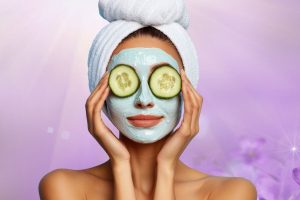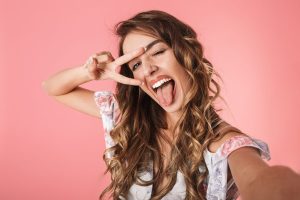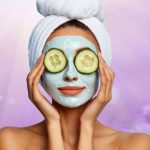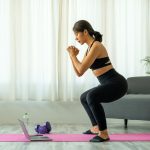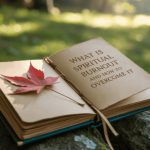Makeup is not a face mask you slap on, it’s art and expression. What you put on, style-wise, texture-wise, and color-wise, says something about you, so it’s extremely important that you play around and experiment with them until you discover what works best for you.
Practice, precision, and a sense of techniques are required in order to become proficient in makeup as one minute detail can totally modify the overall look. In order to get these, I conducted extensive research on local beauty schools, from which I obtained useful information from experts.
The following are some fundamental makeup techniques to learn for your application.
1. Preparing the Skin Before Makeup
Proper prep of the skin prior to makeup application is essential. Properly prepped skin equals flawless finish, better wear, and a healthy glow. Without it, makeup will be heavy and cakey and can break out or dry out your face.
How to Prep the Skin
- Cleansing: Wash away dirt, oil, and makeup residue with a gentle facial cleanser suitable for your skin type.
- Toning: Toning on the skin using a cotton pad to equalize pH and close pores.
- Moisturizing: Makeup wears longer when your face is moisturized and does not cake.
- Primer Application: Primer also serves as a barrier between foundation and skin, providing long-wearing wear and surface smoothness.
Tip: Mixing a few drops of rose water in moisturizer provides a fresh, dewy appearance.
2. Creating a Flawless Base
The foundation is the foundation of makeup, and the application technique is the key to looking put-together and professional.
Steps to a Flawless Base
- Primer: Use a thin layer so that the makeup lasts long and prevents pores from showing.
- Foundation: The most important thing is choosing the right color! Test it by rubbing a little on the back of your hand prior to application.
- Application: Apply with a damp sponge or brush and allow it to mix beautifully into the jawline, neck, and face.
- Setting Powder: Light dusting with translucent powder over the foundation to set the foundation and prevent shine and fade.
Tip: Buff in circular motions for everyday coverage and never apply too much product.
3. Concealer for a Flawless Finish
Concealer is a must-have product for evening out facial color, spot-fading, and lightening dark circles around the eyes.
How to Apply Concealer Effectively
Selecting the Ideal Shade: Employ one shade lighter than your skin color to illuminate and an exact match for concealing blemishes.
- Technique of Application: Pat the product gently on the problem areas instead of rubbing.
- Blending: Blending the concealer with foundation involves soft tap motions.
Tip: Triangular concealer application under the eyes gives brightness and outlines facial features.
4. Contouring the Features: Blush, Highlighter & Chiseling
Makeup is not merely camouflage; it defines natural beauty.
Blush Application
- Blush cheeks’ apples, curving upwards to give a healthy, fresh glow.
- Use warm colours for fair skin and deep colours for darker skin.
Highlighter Placement
- Highlight on cheekbones, brow bones, nose bridge, and Cupid’s bow to lighten.
- Oily skin powder highlighter and dry skin liquid highlighter.
Contouring Basics
- Apply matte bronzer or contour powder to the jawline, cheekbones, and forehead.
- Blend, blend, blend – don’t want hard lines.
Tip: Less is more- build slowly for a natural, sculpted look.
Additional Makeup Techniques
Eye Makeup Basics
Eyes are the most expressive feature on the face, so eye makeup is a total game-changer.
Eyeshadow Tips
- Neutral shades are great for everyday wear, whereas bold shades create drama.
- Mix shadows in windshield-wiper strokes for soft blending.
Eyeliner Secrets
- Use gel liner for accuracy and pencil for a smoky eye.
- Use white or nude liner along the lower waterline to make eyes look bigger.
Volume Mascara
- Pre-tear lashes with curling before applying mascara.
- Begin at the base and wiggle upwards for maximum length.
Tip: A Light dusting of translucent powder between coats of mascara gives fuller lashes.
Lip Makeup Finishing Touches
Lips finish the look, so definition and color are of the highest importance.
Steps to Lasting Lip Color
- Lip Exfoliation: Gently remove dead skin with a lip scrub.
- Lip Liner: Line lips for accuracy and extended wear.
- Lipstick Application: Color in with a brush or direct application.
- Gloss or Balm: Apply for moisture and shine.
Tip: Using a tissue to blot between lipstick applications keeps them from smudging and increases longevity.
Makeup Hygiene & Safety
Makeup hygiene ensures healthy skin.
Major Precautions
- Hands must be washed with antibacterial soap before applying makeup.
- Makeup brushes and sponges must be cleaned every so often to prevent the buildup of bacteria.
- Preserve makeup items away from heat, cold, and light to maintain quality.
Tip: Share products in the case of eye makeup and risk infection.
Final Thoughts
Makeup is an art, and to master it, you require imagination, patience, and constant practice. Experimenting with different looks, shades, and styles helps you understand what suits your personality and looks best.
Following these fundamental techniques—from application of base and preparing the skin to hygiene routine and accentuating features—helps you achieve an ideal, long-lasting look.



